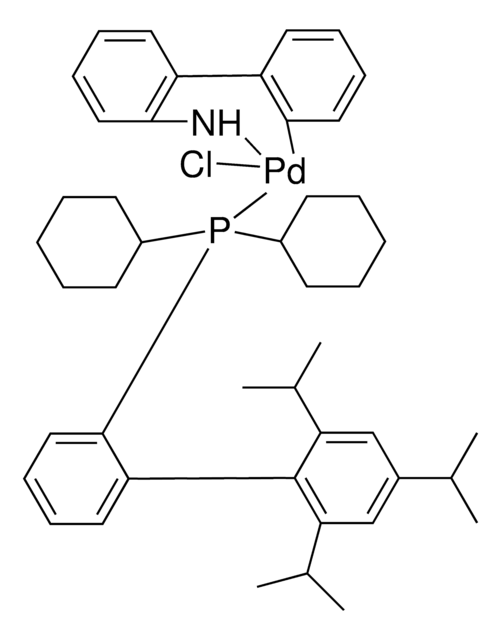E9408
p3xFLAG-Myc-CMV™-25 Expression Vector
Shuttle vector for transient or stable expression of secreted dual tagged N-terminal 3xFLAG and C-terminal c-myc fusion proteins
Sign Into View Organizational & Contract Pricing
All Photos(2)
About This Item
UNSPSC Code:
12352200
Recommended Products
tag
3X FLAG tagged
c-Myc tagged (C-terminal)
grade
for molecular biology
form
buffered aqueous solution
shipped in
dry ice
storage temp.
−20°C
General description
The p3XFLAG-Myc-CMV™-25 Expression Vector is a 6.4 kb derivative of pCMV5 used to establish transient or stable expression of secreted, dual tagged N-terminal 3XFLAG™and C-terminal c-myc fusion proteins in mammalian cells. The vector encodes three adjacent FLAG epitopes (Asp-Tyr-Lys-Xaa-Xaa-Asp) and a c-myc epitope (EQKLISEEDL) upstream and downstream of the multiple cloning sites, respectively. The third FLAG epitope includes the enterokinase recognition sequence, allowing cleavage of the 3XFLAG peptide from the purified fusion protein. The incorporation of 3XFLAG in the expression vector results in increased detection sensitivity using ANTI-FLAG M2 antibody.
p3XFLAG-Myc-CMV-25 Expression Vector is a shuttle vector for E. coli and mammalian cells. Efficiency of replication is optimal when using an SV40 T antigen expressing host.
The p3XFLAG-CMV-7-BAP Control Plasmid is a 6.2 kb derivative of pCMV5 used for transient intracellular expression of N-terminal 3XFLAG bacterial alkaline phosphatase fusion protein in mammalian cells. The vector encodes three adjacent FLAG epitopes (Asp-Tyr-Lys-Xaa-Xaa-Asp) upstream of the multiple cloning region. This results in increased detection sensitivity using ANTI-FLAG M2 antibody. The third FLAG epitope includes the enterokinase recognition sequence, allowing cleavage of the 3XFLAG peptide from the purified fusion protein.
Vector Maps and Sequences
p3XFLAG-Myc-CMV-25 Expression Vector is a shuttle vector for E. coli and mammalian cells. Efficiency of replication is optimal when using an SV40 T antigen expressing host.
The p3XFLAG-CMV-7-BAP Control Plasmid is a 6.2 kb derivative of pCMV5 used for transient intracellular expression of N-terminal 3XFLAG bacterial alkaline phosphatase fusion protein in mammalian cells. The vector encodes three adjacent FLAG epitopes (Asp-Tyr-Lys-Xaa-Xaa-Asp) upstream of the multiple cloning region. This results in increased detection sensitivity using ANTI-FLAG M2 antibody. The third FLAG epitope includes the enterokinase recognition sequence, allowing cleavage of the 3XFLAG peptide from the purified fusion protein.
Vector Maps and Sequences
Components
p3XFLAG-Myc-CMV™-25 Expression Vector 20 μg (E6276) is supplied as 0.5 mg/ml in 10 mM Tris-HCl (pH 8.0) with 1 mM EDTA.
p3XFLAG-CMV™-7-BAP Control Plasmid 20 μg (C7472) is supplied as 0.5 mg/ml in 10 mM Tris-HCl (pH 8.0) with 1 mM EDTA.
p3XFLAG-CMV™-7-BAP Control Plasmid 20 μg (C7472) is supplied as 0.5 mg/ml in 10 mM Tris-HCl (pH 8.0) with 1 mM EDTA.
Principle
The promoter-regulatory region of the human cytomegalovirus drives transcription of FLAG® and c-myc fusion constructs. The aminoglycoside phosphotransferase II gene (Neo-r) confers resistance to aminoglycosides such as G418 allowing for selection of stable transfectants.
Legal Information
This product is covered by the following patents owned by Sigma-Aldrich Co. LLC: US6,379,903, US7,094,548, JP4405125,EP1220933, CA2386471 and AU774216.
3xFLAG is a trademark of Sigma-Aldrich Co. LLC
FLAG is a registered trademark of Merck KGaA, Darmstadt, Germany
p3xFLAG-CMV is a trademark of Sigma-Aldrich Co. LLC
p3xFLAG-Myc-CMV is a trademark of Sigma-Aldrich Co. LLC
related product
Product No.
Description
Pricing
Storage Class Code
10 - Combustible liquids
Certificates of Analysis (COA)
Search for Certificates of Analysis (COA) by entering the products Lot/Batch Number. Lot and Batch Numbers can be found on a product’s label following the words ‘Lot’ or ‘Batch’.
Already Own This Product?
Find documentation for the products that you have recently purchased in the Document Library.
Wenqin Xu et al.
Journal of virology, 85(7), 3498-3506 (2011-01-29)
BHK cells remain resistant to xenotropic murine retrovirus-related virus (XMRV) or gibbon ape leukemia virus (GALV) infection, even when their respective receptors, Xpr1 or PiT1, are expressed. We set out to determine the stage at which viral infection is blocked
P A Possik et al.
European journal of histochemistry : EJH, 48(3), 267-272 (2004-12-14)
We used immunocytochemical and fluorescence assays to investigate the subcellular location of the protein encoded by Down syndrome critical region gene 2 (DSCR2) in transfected cells. It was previously suggested that DSCR2 is located in the plasma membrane as an
Mitsuyoshi Hashimoto et al.
Glycobiology, 17(9), 994-1006 (2007-06-27)
Secreted mucins protect the underlying epithelium by serving as the major determinant of the rheological property of mucus secretion and the receptors for pathogens. These functions can be affected by the three branch structures, including core 2, core 4, and
Li-Yun Jia et al.
Investigative ophthalmology & visual science, 50(8), 3743-3749 (2009-02-24)
To characterize a novel Asp384Asn (D384N) mutant myocilin (MYOC) that causes juvenile-onset open-angle glaucoma (JOAG) and investigate the correction of mutant phenotype by a natural osmolyte, trimethylamine N-oxide (TMAO). A Chinese JOAG family was recruited and genomic DNA was extracted
Masahiro Nakagawa et al.
Blood, 108(10), 3329-3334 (2006-08-05)
The Notch1-RBP-Jkappa and the transcription factor Runx1 pathways have been independently shown to be indispensable for the establishment of definitive hematopoiesis. Importantly, expression of Runx1 is down-regulated in the para-aortic splanchnopleural (P-Sp) region of Notch1- and Rbpsuh-null mice. Here we
Our team of scientists has experience in all areas of research including Life Science, Material Science, Chemical Synthesis, Chromatography, Analytical and many others.
Contact Technical Service